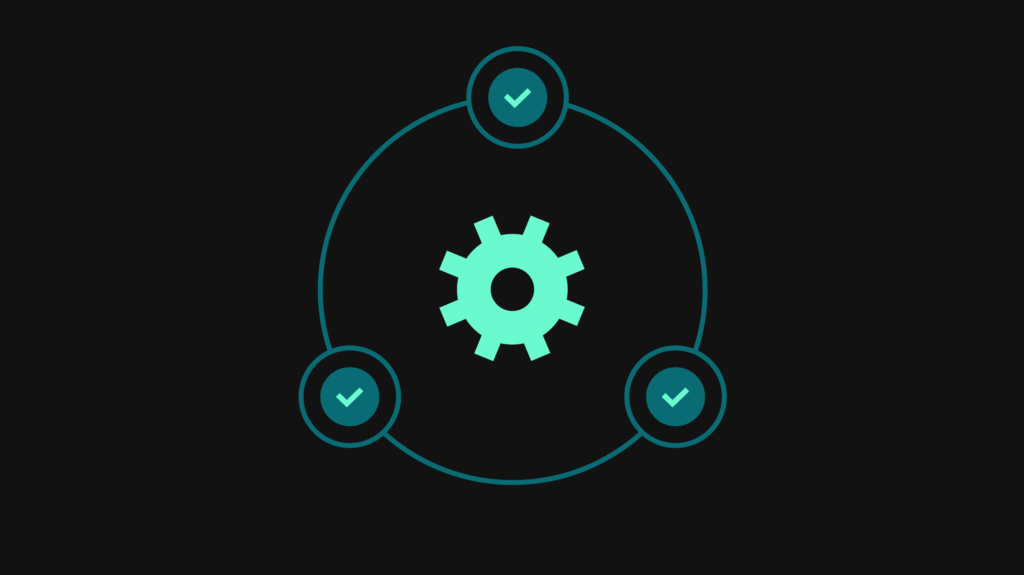3 Ways B2B Brands Can Win in a Cookieless World
January 13, 2022Even before we got closer to a cookieless world, marketers and salespeople agreed: Personalization is crucial to business-to-business (B2B) success.
Seventy-seven percent say personalization strengthens customer relationships, and 55% say it drives more conversions.
But no one said it was easy.
Forty-two percent of marketing and sales teams admit they struggle to deliver personalized customer experiences. And with third-party cookies being phased out, accurately identifying and targeting prospects will only become more difficult.
Or will it? Anonymous third-party data had plenty of problems, inaccuracy being chief among them. For example, research showed that making decisions based on demographic information provided by data brokers could be less accurate than if companies had simply flipped a coin.
There’s no doubt B2B brands will have to re-evaluate how they acquire and convert customers, but the death of the cookie also gives organizations a chance to replace flawed data with valuable insights.
Here are three ways B2B brands can calibrate their business strategies to make true personalization possible.
1. Unify Customer Data Across Marketing & Sales
The average B2B buyer may complete up to 70% of their buying journey before ever even contacting a sales representative. And while there’s no doubt there are plenty of insights to be gleaned — the website pages they’ve visited, the content they find most engaging — it won’t do much good if it’s not shared across teams.
In the cookieless future, it’s vital that marketing and sales teams come together and make the most of their customer data. Each team will have a different piece of a buyer’s identity and preferences, but if this information remains siloed, customer experiences will be disjointed.
Your first step is finding a solution that will help you unify and centralize your first-party data. There’s a reason nearly half of B2B marketers are already investing in customer data platforms (CDP), after all.
But it’s not enough to simply collect information — to effectively identify and target accounts with an intent to purchase, you need technology that will make customer data accessible to the teams that need it most.
Centralizing account and contact data across all existing marketing and sales systems is essential, but ensuring different teams can collaborate around a single source of truth, continue to enrich customer identities and self-serve customer insights is just as important.
2. Prioritize Consent and Early Authentication
With third-party cookies going away, first-party data is the future-proof solution brands are looking for. But remember, part of the reason anonymous third-party data is disappearing is because consumers will no longer stand for their personal information being collected, used and shared without their knowledge or approval.
To strengthen customer relationships — as well as maintain compliance with ever-evolving privacy regulations — B2B brands must be upfront about what information they’re gathering and how it’s being used.
With that said, it’s not enough to just ask for consent. Look no further than Apple’s App Store for proof — when asked if iOS apps can track their behavior, people say no 75% of the time. The key is providing value in exchange.
Sixty-six percent of consumers say they’ll share their personal information in return for additional value. Make it clear how handing over their personal data will help you provide prospects with superior customer experiences.
Business-to-consumer (B2C) brands are fond of providing discounts or similar rewards in exchange for customer data, but B2B brands may explore providing exclusive content or early access to products and services.
Don’t forget to authenticate prospects as early as possible. The sooner you know who you’re talking to, the sooner you can personalize the buyer journey.
Of course, asking for a prospect’s life story right off the bat doesn’t make for seamless CX. One option is employing a progressive profiling strategy, which allows you to collect the bare minimum of information necessary to authenticate a customer’s identity and then enrich that customer profile over time by collecting new pieces of data at different touchpoints.
3. Build Person-Based Customer Journeys
Eighty percent of B2B buyers expect a B2C-like experience.
This makes it imperative for B2B brands to build sophisticated, multi-step customer journeys that are tailored to specific accounts and contacts.Creating connected journeys not only helps brands reduce acquisition costs by as much as 50%, it’s also shown to increase customer lifetime value by as much as 25%.
Industry, persona, product interest and more should all inform how you develop customer journeys, but keep in mind that engaging the right customers with the right messaging is only one piece of the puzzle. You also have to make sure you do it at the right time and place.
Develop omnichannel journeys and automate real-time customer experiences to differentiate your brand from competitors and give prospects the personalized experiences they want.
Any which way you slice it, the prospecting and conversion use cases you execute on today will likely need to change tomorrow. By making accessible, authenticated first-party data the foundation of your B2B business strategy — and using it to deliver tailored, highly relevant CX — you’ll future-proof your marketing and sales while setting yourself up to succeed in the privacy-first future.
Learn More
Download The B2B Technology Advertiser’s Guide to CX in a Cookieless World to understand how third-party cookie deprecation may impact your business use cases and what you can do to set yourself up for success.
This post first appeared on the ActionIQ blog. To see the full article, click here.


